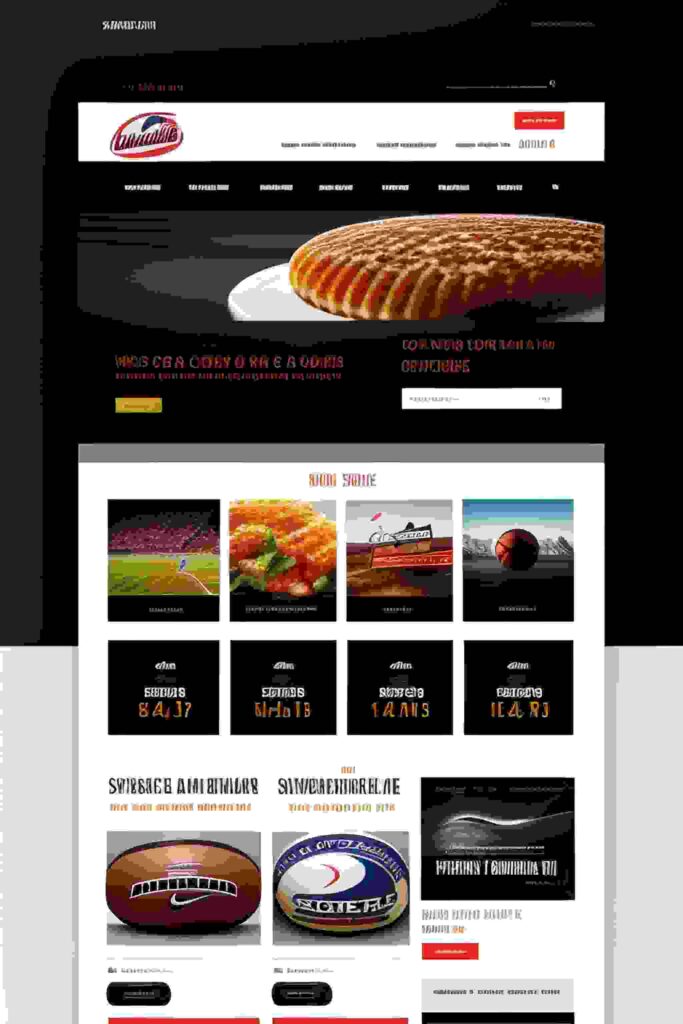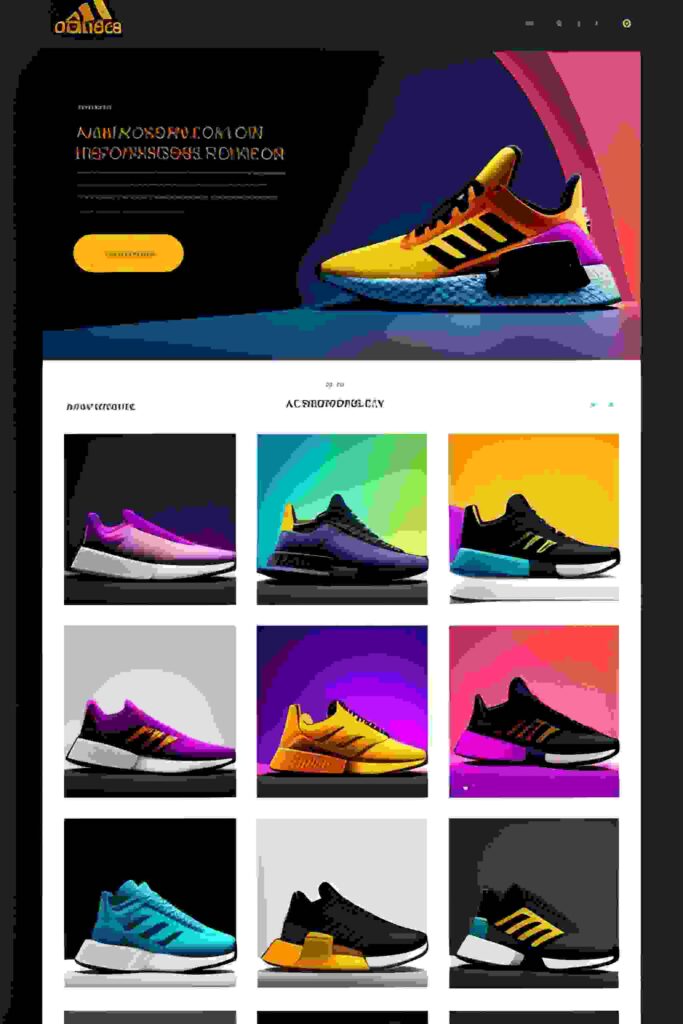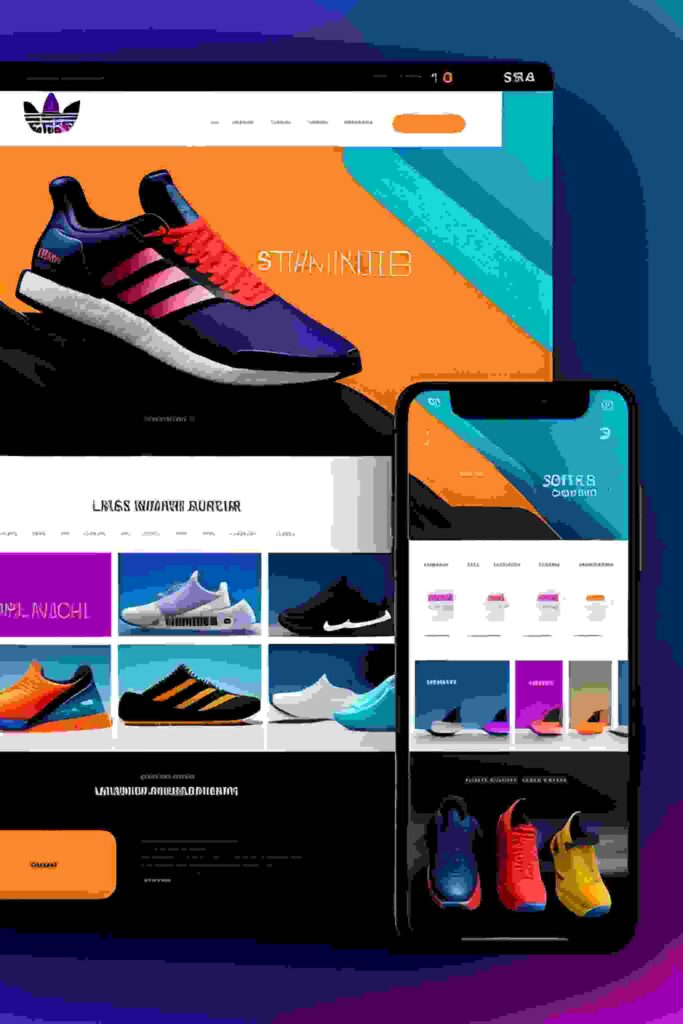In this digital marketing world, Google Marketing is a comprehensive digital advertising strategy that utilizes Google marketing platform and services to connect businesses with their target audience network.
It encompasses various tactics such as Google Ads, search engine optimization (SEO), display network advertising, YouTube advertising, and more.
With Google Marketing, businesses can effectively reach potential customers, increase brand visibility, and drive website traffic.
By leveraging tools like Google Analytics, businesses can measure the success of their marketing efforts and refine their strategies accordingly.
Google Marketing offers a powerful and versatile platform for businesses to maximize their online presence, engage their audience, and achieve their marketing goals.
- Introduction to Google Marketing
- Google Ads: The Cornerstone of Google Marketing
- Search Engine Optimization (SEO) for Google Marketing
- Google Display Network: Reaching Your Audience
- Google Shopping: Boosting E-commerce Sales
- YouTube Advertising: Engaging Audiences through Video
- Remarketing with Google ads marketing: Reconnecting with Potential Customers
- Mobile Advertising on marketing platform Google: Reaching On-the-Go Users
- Google paid search google analytics Analytics: Measuring Success and Refining Strategies
- Google My Business: Enhancing Local Visibility with Google marketing platform
- In conclusion of Google marketing
Introduction to Google Marketing

Image Sourcse Lexica Art
Google Marketing is a comprehensive digital marketing strategy that utilizes the various advertising platforms and tools provided by Google to reach and engage target audiences effectively.
With billions of daily searches conducted on Google, businesses can leverage this vast user base to enhance their online visibility, drive qualified traffic, and achieve their marketing goals.
Google Marketing encompasses several key components, including Google Ads, which enables businesses to create and manage pay-per-click (PPC) campaigns across search, display, video, and mobile platforms.
The Google Display Network allows businesses to showcase their ads on millions of websites, reaching a broader audience. YouTube Advertising provides opportunities for video ad campaigns on the world’s largest video-sharing platform.
Furthermore, Google Marketing incorporates search engine optimization (SEO) techniques to improve organic search rankings, Google Shopping to promote e-commerce products, remarketing to re-engage potential customers, and Google Analytics to measure and analyze campaign performance.
By leveraging Google Marketing strategies, businesses can effectively target their desired audience, increase brand visibility, drive conversions, and ultimately grow their online presence in a highly competitive digital landscape.
Understanding the Basics of Google search engine advertising
Google Marketing is a comprehensive digital marketing strategy that revolves around leveraging Google’s platforms and services to promote businesses and reach their target audience effectively.
To grasp the basics of Google Marketing, it’s crucial to explore its key components.
At the core of Google Marketing is Google Ads, a powerful advertising platform that allows businesses to create and manage various types of campaigns, such as search ads, display ads, video ads, and more.
Google Ads provides targeting options, including demographics, keywords, and locations, ensuring that businesses can reach the right audience at the right time.
Another important aspect of Google Marketing is search engine optimization (SEO). By optimizing their websites and content for search engines, businesses can increase their organic visibility on Google’s search results pages and attract relevant traffic.
Additionally, Google Marketing includes other advertising channels such as the Google Display Network, YouTube, and Google Shopping.
These platforms offer unique opportunities to engage audiences through display ads, video content, and product listing ads, respectively.
Measure the effectiveness of marketing efforts, Google Analytics plays a crucial role. It provides insights into website traffic, user behavior, and conversion rates, enabling businesses to make data-driven decisions and optimize their marketing strategies.
Understanding the basics of Google Marketing allows businesses to harness the power of Google’s vast reach and diverse advertising options.
By utilizing Google Ads, optimizing for SEO, exploring various advertising channels, and leveraging data from Google Analytics, businesses can enhance their online presence, drive targeted traffic, and achieve their marketing goals effectively.
Key Benefits of Google Marketing
Google Marketing offers numerous advantages for businesses seeking to enhance their online presence and reach their target audience effectively. Here are some key benefits:
- Extensive Reach: With billions of daily searches on Google, businesses can tap into a vast global audience and expand their brand visibility.
- Targeted Advertising: Google’s advertising platforms allow precise targeting based on keywords, demographics, locations, and user behavior, ensuring that businesses reach the right audience with relevant messaging.
- Measurable Results: Google Marketing provides robust analytics tools, such as Google Analytics, to measure campaign performance, track conversions, and gain valuable insights for optimization.
- Cost Efficiency: With options like Google Ads’ pay-per-click (PPC) model, businesses only pay when users interact with their ads, making it a cost-effective advertising solution.
- Flexibility and Customization: Google Marketing platforms offer various ad formats, including text, display, video, and mobile, allowing businesses to tailor their campaigns to suit their goals and target audience.
- Remarketing Opportunities: Google’s remarketing capabilities enable businesses to reconnect with potential customers who have previously shown interest, increasing conversion rates.
- Integration with Google Ecosystem: Google Marketing seamlessly integrates with other Google services like Google Maps, YouTube, and Google My Business, providing cross-platform marketing opportunities.
- Local Business Promotion: Google My Business allows businesses to optimize their local visibility, making it easier for customers to find and engage with them.
By harnessing the power of Google Marketing, businesses can elevate their online presence, drive targeted traffic, boost conversions, and ultimately achieve their marketing objectives with efficiency and effectiveness.
Exploring Google’s Advertising Platforms
Google’s advertising platforms offer businesses a diverse range of opportunities to reach their target audience and promote their products or services effectively. By exploring these platforms, businesses can leverage Google’s massive reach and advanced targeting capabilities.
Google Ads is the central advertising platform that allows businesses to create and manage various types of campaigns, including search ads, display ads, video ads, shopping ads, and more.
With precise targeting options based on keywords, demographics, interests, and locations, businesses can reach their desired audience with precision.
The Google Display Network extends the reach of ads across millions of websites, apps, and video platforms, enabling businesses to showcase visually engaging ads to a vast audience.
YouTube, as part of the Google ecosystem, provides a powerful platform for video advertising. With billions of active users, businesses can create engaging video ads and reach a wide audience across different devices.
Additionally, Google Shopping enables e-commerce businesses to showcase their products directly in search results, attracting potential customers with visually appealing images and relevant information.
Exploring Google’s advertising platforms allows businesses to tap into the vast potential of online advertising, boost brand visibility, drive targeted traffic, and ultimately achieve their marketing objectives.
Google Ads: The Cornerstone of Google Marketing

Image Sourcse Lexica Art
Google Ads is undeniably the cornerstone of Google Marketing, offering businesses an unparalleled platform to reach their target audience, drive website traffic, and achieve their marketing objectives.
As the leading online advertising platform, Google Ads provides a diverse range of ad formats and targeting options to suit various business goals.
With Google Ads, businesses can create compelling text ads, image ads, responsive ads, video ads, and even interactive ads that appear across Google’s vast network of websites, search results, mobile apps, and YouTube.
The platform’s robust targeting capabilities allow businesses to refine their audience based on demographics, interests, location, and specific keywords.
Google Ads also offers powerful tools for campaign management and optimization. Advertisers can monitor and adjust their ad performance, set budgets and bidding strategies, conduct A/B testing, and track conversions with ease.
The platform provides valuable insights and data to measure the success of ad campaigns and make data-driven decisions.
By harnessing the potential of Google Ads, businesses can effectively promote their products or services, increase brand visibility, and drive relevant traffic that leads to conversions, making it an indispensable tool for any comprehensive Google Marketing strategy.
Overview of Google Ads and its Features
Google Ads is a powerful online advertising platform offered by Google, allowing businesses to promote their products and services through various ad formats across Google’s extensive network.
It provides a wide range of features and tools to help advertisers create, manage, and optimize their ad campaigns.
With Google Ads, advertisers can target their ads based on specific keywords, demographics, locations, and interests, ensuring their messages reach the right audience at the right time.
Advertisers have the flexibility to choose between different ad formats, including text ads, display ads, video ads, shopping ads, and app promotion ads, enabling them to tailor their campaigns to their marketing objectives.
The platform offers robust performance tracking and reporting features, allowing advertisers to monitor the effectiveness of their campaigns, measure conversions, and make data-driven decisions for campaign optimization.
Advertisers can set budget limits, bid strategies, and ad scheduling to maximize their return on investment (ROI) and control their ad spend.
Google Ads also provides advanced features like remarketing, which allows advertisers to target users who have previously interacted with their website or app, increasing the chances of conversion.
Additionally, it offers tools for ad testing, audience targeting, and keyword research, further enhancing campaign performance.
Overall, Google Ads offers advertisers a comprehensive suite of features and targeting options to reach their target audience effectively and achieve their advertising goals.
Creating Effective Ad Campaigns on Google Ads
When it comes to digital advertising, Google Ads is a powerful platform that offers businesses the opportunity to reach their target audience effectively.
To create successful ad campaigns on Google Ads, certain key strategies should be considered.
Firstly, conducting thorough keyword research using tools like Google Keyword Planner or other keyword research tools helps identify relevant keywords to target in the ad campaigns.
This ensures that ads are displayed to users actively searching for related products or services.
Next, crafting compelling ad copy that grabs attention and clearly communicates the unique selling propositions is crucial. Ads should be concise, persuasive, and include a strong call-to-action to drive user engagement and conversions.
Ad targeting is another essential aspect of creating effective campaigns. Utilizing demographic, geographic, and interest-based targeting options allows businesses to reach their desired audience with precision.
Regular monitoring and optimization are essential for campaign success. Analyzing performance metrics, such as click-through rates (CTRs) and conversion rates, allows for data-driven decision-making and the refinement of campaigns to maximize results.
By following these best practices and leveraging the features and targeting options provided by Google Ads, businesses can create highly effective ad campaigns that drive qualified traffic, increase brand visibility, and ultimately achieve their marketing goals.
Optimizing Performance and ROI on Google Marketing
Optimizing Performance and ROI on Google Ads is crucial for businesses seeking to maximize the effectiveness and profitability of their advertising campaigns. Here are some key strategies to achieve optimal results:
Targeting and Audience Segmentation: Refine your target audience by leveraging Google Ads’ robust targeting options, such as demographics, location, interests, and device preferences. Segment your audience to deliver personalized ads and optimize budget allocation.
Keyword Optimization: Continuously monitor and refine your keyword selection. Focus on relevant, high-converting keywords and regularly review search term reports to identify negative keywords and refine match types.
Ad Copy and Extensions: Craft compelling ad copy that aligns with user intent. Utilize ad extensions like site links, callouts, and structured snippets to provide additional information and increase click-through rates.
Landing Page Optimization: Create relevant, user-friendly landing pages with clear call-to-actions. Ensure fast load times, mobile responsiveness, and persuasive content to maximize conversions.
Bid Management: Monitor and adjust your bids to achieve a balance between visibility and cost-efficiency. Consider automated bidding strategies and utilize bid modifiers for better control.
Ad Testing and Experimentation: Continuously test different ad variations, headlines, calls-to-action, and visuals to identify top performers and improve ad relevance and click-through rates.
Conversion Tracking and Measurement: Implement conversion tracking to measure the effectiveness of your campaigns. Analyze key metrics like click-through rates, conversion rates, and cost per acquisition to optimize performance.
Performance Analysis and Optimization: Regularly review campaign data, identify trends, and make data-driven decisions. Adjust budgets, targeting, and ad strategies based on performance insights.
By implementing these optimization techniques, businesses can enhance their Google Ads campaigns, increase their return on investment (ROI), and achieve better overall performance and success in their advertising efforts.
Search Engine Optimization (SEO) for Google Marketing

Image Sourcse Lexica Art
Search Engine Optimization (SEO) plays a critical role in Google Marketing, as it focuses on optimizing websites and content to improve organic visibility and drive targeted traffic from search engine results pages (SERPs).
By implementing effective SEO strategies, businesses can enhance their online presence and attract relevant audiences.
SEO for Google Marketing involves various techniques, including on-page and off-page optimization.
On-page optimization includes optimizing website structure, meta tags, headings, and content with relevant keywords.
Off-page optimization involves building high-quality backlinks, social media signals, and online reputation management.
Keyword research is a fundamental aspect of SEO, and tools like Google Keyword Planner, Ahrefs Keyword Generator, and Kwfinder can aid in identifying relevant and high-performing keywords.
Additionally, optimizing website speed, mobile responsiveness, and user experience contribute to SEO success. Google’s algorithm considers these factors when ranking websites.
Regular monitoring of website performance using tools like Google Analytics and Search Console allows businesses to track keyword rankings, organic traffic, and user behavior to refine their SEO strategies.
By implementing SEO best practices, businesses can improve their visibility in Google’s search results, increase organic traffic, and ultimately drive conversions and business growth.
Importance of SEO in Google Marketing
SEO (Search Engine Optimization) plays a pivotal role in Google Marketing, offering numerous benefits for businesses aiming to maximize their online presence. Here’s why SEO is crucial:
- Increased Organic Visibility: SEO helps websites rank higher in search engine results pages (SERPs), leading to improved visibility and increased organic traffic.
- Targeted Traffic: Optimizing website content with relevant keywords and phrases ensures that it appears in front of the right audience, driving targeted traffic and potential customers.
- Cost-Effective Strategy: Unlike paid advertising, SEO is a long-term investment that generates sustainable organic traffic without ongoing ad costs.
- Credibility and Trust: Higher organic rankings contribute to building credibility and trust among users. When a website ranks well on Google, it often signifies authority and expertise in its industry.
- Better User Experience: SEO involves optimizing website structure, navigation, and loading speed, resulting in a positive user experience and higher chances of user engagement.
- Mobile Optimization: With the increasing dominance of mobile searches, SEO helps ensure websites are mobile-friendly and optimized for mobile devices, improving user experience and search rankings.
- Local Search Visibility: Local businesses can leverage SEO techniques to improve their visibility in local search results, attracting nearby customers.
By incorporating SEO strategies into their Google Marketing efforts, businesses can gain a competitive edge, drive targeted traffic, and achieve long-term success in the digital landscape.
On-Page and Off-Page Optimization Techniques
On-page and off-page optimization are two fundamental aspects of search engine optimization (SEO) that work together to improve a website’s visibility and search engine rankings.
On-Page Optimization:
On-page optimization focuses on optimizing individual web pages to make them search engine-friendly and relevant to users.
This includes techniques such as keyword research and placement, creating high-quality and relevant content, optimizing meta tags, headers, and URLs, improving page load speed, and ensuring mobile-friendliness.
On-page optimization aims to enhance the user experience and provide valuable and relevant information to search engine crawlers.
Off-Page Optimization:
Off-page optimization involves activities outside the website itself to improve its online reputation and authority.
This includes building high-quality backlinks from reputable and relevant websites, social media marketing, influencer outreach, guest blogging, online reputation management, and content promotion.
Off-page optimization signals to search engines that the website is trustworthy, authoritative, and relevant, thereby improving its rankings in search engine results pages (SERPs).
Both on-page and off-page optimization techniques are crucial for a comprehensive SEO strategy.
Effective implementation of these techniques can significantly enhance a website’s visibility, organic traffic, and overall online presence.
Utilizing Keywords and Content Strategy for SEO
Keywords play a vital role in search engine optimization (SEO), as they are the terms and phrases that users enter into search engines to find relevant information.
To maximize SEO efforts, businesses must strategically incorporate keywords into their content and develop a solid content strategy.
Firstly, thorough keyword research is essential. Tools like Google Keyword Planner, Ubersuggest, and Ahrefs Keyword Generator help identify relevant keywords with high search volumes and low competition.
Once the keywords are identified, they should be strategically placed throughout the website’s content, including headings, titles, meta tags, and within the body of the text.
However, it’s important to maintain a natural and user-friendly flow of content. Keyword stuffing or overusing keywords can harm the user experience and even lead to penalties from search engines.
Instead, businesses should focus on creating high-quality, valuable content that aligns with user intent and incorporates keywords naturally.
Additionally, businesses should consider long-tail keywords, which are longer and more specific phrases. These keywords often have less competition and can attract highly targeted traffic.
A well-planned content strategy goes hand in hand with keyword utilization. Businesses should create a content calendar, identify target audiences, and develop informative, engaging, and optimized content that aligns with users’ search queries.
This includes blog posts, articles, videos, infographics, and other formats that resonate with the target audience.
Regularly monitoring and analyzing keyword performance using tools like SEMrush, Google Analytics, Answer the Public, Ubersuggest, and Keywords Everywhere is crucial.
This allows businesses to identify top-performing keywords, uncover new opportunities, and make data-driven decisions to continually optimize their SEO efforts.
By effectively utilizing keywords and implementing a comprehensive content strategy, businesses can enhance their website’s visibility, attract organic traffic, and improve their overall search engine rankings.
Also, read: List of long tail keywords tool
Also, read: How to find easy to rank keyword
Google Display Network: Reaching Your Audience

Image Sourcse Lexica Art
Google Display Network (GDN) is a powerful advertising platform that allows businesses to reach a vast audience of potential customers across millions of websites, mobile apps, and video content.
With the GDN, businesses can display visually engaging ads in various formats, including image ads, responsive ads, and even interactive ads.
Reaching Your Audience through the Google Display Network offers several advantages. Firstly, it provides extensive reach, enabling businesses to connect with users throughout their online browsing experiences.
By targeting specific demographics, interests, and behaviors, businesses can effectively reach their intended audience and drive relevant traffic to their websites.
The GDN also offers precise targeting options, allowing businesses to refine their audience selection based on factors such as demographics, interests, and even remarketing to reconnect with previous visitors.
This targeting precision helps maximize ad relevance and improve conversion rates.
Moreover, the GDN provides valuable placement control, allowing businesses to choose specific websites, placements, or categories where their ads will be displayed.
This control ensures that ads appear in relevant contexts, enhancing brand visibility and increasing the likelihood of engagement.
By leveraging the Google Display Network, businesses can expand their reach, increase brand awareness, and generate valuable leads by effectively reaching and engaging their target audience across a diverse range of online platforms.
Introduction to the Google Display Network (GDN)
The Google Display Network (GDN) is a powerful advertising platform that allows businesses to reach a vast audience across millions of websites, mobile apps, and video content.
As an extension of Google Ads, the GDN offers advertisers the opportunity to display visually appealing banner ads, text ads, and even interactive ads to engage users as they browse various online platforms.
With the GDN, businesses can target their ads based on specific demographics, interests, keywords, and website placements, ensuring their message reaches the right audience at the right time.
This network enables advertisers to build brand awareness, increase visibility, and drive traffic to their websites or landing pages.
The GDN also provides a wide range of ad formats, including static images, animated banners, responsive ads, and video ads, allowing businesses to convey their message in a visually compelling way.
Advertisers can leverage the power of remarketing to reconnect with users who have previously interacted with their website or app, reinforcing their brand message and increasing the likelihood of conversions.
By utilizing the Google Display Network, businesses can expand their reach, target specific audiences, and create engaging ad experiences to drive their marketing objectives forward.
Display Ad Formats and Targeting Options
Display advertising offers a diverse range of ad formats and targeting options to effectively reach and engage target audiences across the Google Display Network (GDN).
With a wide array of formats and customization possibilities, businesses can create visually appealing and interactive ads to capture users’ attention.
- Common display ad formats include banner ads, responsive ads, interstitial ads, native ads, and video ads.
- Banner ads come in various sizes and can be static or animated, appearing on websites and mobile apps.
- Responsive ads automatically adapt to fit different ad spaces, ensuring optimal visibility and performance across devices. Interstitial ads are full-screen ads that appear between content transitions.
- Native ads seamlessly blend into the website or app’s design, enhancing user experience. Video ads, including in-stream and out-stream ads, leverage the power of video content for impactful storytelling.
In terms of targeting, businesses can utilize various options such as demographic targeting, contextual targeting, remarketing, and interest-based targeting.
Demographic targeting allows advertisers to tailor their ads based on factors like age, gender, and location. Contextual targeting focuses on displaying ads on web pages related to specific keywords or topics.
Remarketing enables advertisers to target users who have previously interacted with their website or app.
Interest-based targeting leverages user data to display ads to individuals with specific interests or behaviors.
By leveraging the diverse range of display ad formats and targeting options, businesses can deliver personalized and engaging ads to their target audience, driving higher engagement, brand visibility, and conversions.
Designing Compelling Display Ads for Maximum Impact
Display advertising plays a crucial role in capturing the attention of potential customers and driving engagement.
To ensure maximum impact, it is essential to design compelling display ads that stand out and effectively convey the intended message. Here are some key strategies for designing impactful display ads:
Clear and Concise Message: Craft a concise and compelling message that quickly communicates the value proposition or offer.
Eye-Catching Visuals: Use high-quality and attention-grabbing visuals that resonate with the target audience, incorporating appealing colors, images, and typography.
Strong Call-to-Action: Include a clear and prominent call-to-action (CTA) that encourages users to take the desired action, such as “Shop Now” or “Learn More.”
Responsive Design: Ensure that display ads are optimized for various devices and screen sizes, providing a seamless experience across desktop, mobile, and tablet devices.
Ad Placement Consideration: Tailor the design to match the placement context and consider factors like ad dimensions, ad positioning, and surrounding content.
A/B Testing: Continuously test different variations of the ad design, including visuals, copy, and CTAs, to identify the most effective combination for maximum impact.
By implementing these strategies, businesses can create visually appealing and persuasive display ads that captivate the audience, drive clicks, and achieve desired campaign objectives.
Google Shopping: Boosting E-commerce Sales

Image Sourcse Lexica Art
Google Shopping is a powerful platform that enables businesses to showcase their products directly in Google search results, boosting e-commerce sales and enhancing visibility.
With Google Shopping, businesses can create product listings that include essential details such as images, prices, and product descriptions.
By appearing prominently in search results with eye-catching visuals, Google Shopping attracts the attention of potential customers and drives qualified traffic to e-commerce websites.
The platform offers a seamless shopping experience by allowing users to compare products, view reviews, and make purchases directly from the search results page.
To maximize the impact of Google Shopping, businesses can optimize their product feeds by ensuring accurate and up-to-date information.
This includes providing detailed product descriptions, high-quality images, and relevant attributes.
Furthermore, businesses can leverage bidding strategies and advanced targeting options to reach their desired audience effectively.
With precise audience targeting, businesses can increase the likelihood of reaching customers who are actively searching for their products.
By harnessing the power of Google Shopping, businesses can significantly boost e-commerce sales, increase brand visibility, and gain a competitive edge in the online marketplace.
Overview of Google Shopping and Product Listing Ads (PLAs)
Google Shopping and Product Listing Ads (PLAs) are powerful tools within Google’s advertising ecosystem that enable businesses to showcase their products to potential customers.
Google Shopping is a platform where retailers can create product listings and display them prominently in Google search results.
It provides a visually appealing and engaging way for users to discover and compare products, making it an effective channel for e-commerce businesses.
Product Listing Ads (PLAs) are the specific ads that appear on Google Shopping. These ads display product images, titles, prices, and store information, providing users with a snapshot of the product before they even click on the ad.
PLAs are highly targeted, as they are triggered by relevant search queries and can drive qualified traffic directly to product pages.
By utilizing Google Shopping and PLAs, businesses can increase their product visibility, reach a wider audience, and drive qualified traffic to their online stores. It is an effective way to showcase products, boost e-commerce sales, and maximize return on advertising investment.
Setting up and Managing Google Shopping Campaigns
Setting up and managing Google Shopping campaigns can significantly boost e-commerce sales and maximize product visibility. To get started, businesses need to follow a step-by-step process.
First, create a Google Merchant Center account and link it to your e-commerce platform.
Next, upload a product data feed containing detailed information about your products, including titles, descriptions, prices, and images.
Once the Merchant Center is set up, create a Google Ads account and link it to your Merchant Center. Set up a new Shopping campaign and configure campaign settings such as budget, bidding strategy, and target locations.
Structure your campaign by creating product groups based on attributes like brand, category, or custom labels.
To optimize your Google Shopping campaigns, regularly monitor performance metrics such as impressions, clicks, and conversions.
Adjust bids for individual products or product groups to achieve the desired ROI. Refine product titles, descriptions, and images to improve relevancy and click-through rates.
Leveraging additional features like promotional campaigns, local inventory ads, and remarketing can further enhance the effectiveness of Google Shopping campaigns.
Continuous monitoring, analysis, and optimization are crucial for the successful management of Google Shopping campaigns, ensuring maximum exposure and driving conversions for your products.
Optimizing Product Feeds for Better Performance
Optimizing product feeds is crucial for improving the performance of your online store and maximizing the visibility and sales of your products.
A product feed is a file that contains detailed information about your products, such as title, description, price, availability, and more. Here are some key strategies to optimize your product feeds for better performance:
Accurate and Detailed Information: Ensure that your product feed contains accurate, up-to-date, and comprehensive information about each product. Include relevant details such as product attributes, variations, and unique identifiers.
Keyword Optimization: Research and incorporate relevant keywords into your product titles and descriptions to improve discoverability and search engine rankings. Align your keywords with popular search terms and customer preferences.
High-Quality Images: Use high-resolution, visually appealing product images that showcase your products effectively. Images should be optimized for fast loading times and comply with platform-specific guidelines.
Categorization and Organization: Structure your product feed with appropriate categories and subcategories to enhance navigation and filtering options for customers.
Data Formatting and Standards: Ensure your product feed adheres to the required formatting and standards of the platform or marketplace you are using. Consistency and adherence to guidelines will help prevent errors and disapprovals.
Regular Updates and Monitoring: Keep your product feed up-to-date by regularly reviewing and updating information, prices, and availability. Monitor your feed’s performance metrics to identify opportunities for improvement.
By optimizing your product feeds, you can enhance the visibility, relevance, and overall performance of your products, driving more traffic and increasing conversions on your online store.
YouTube Advertising: Engaging Audiences through Video

Image Sourcse Lexica Art
YouTube has revolutionized the way people consume video content, making it an incredibly valuable platform for advertisers to reach and engage their target audiences.
YouTube Advertising allows businesses to showcase their products, services, or brand messages through various video ad formats, capturing the attention of millions of viewers.
With YouTube Advertising, businesses can leverage precise targeting options to reach their desired audience based on demographics, interests, and viewing behavior.
The platform offers a range of ad formats, including skippable ads, non-skippable ads, bumper ads, and sponsored cards, providing flexibility in delivering compelling messages.
Creating effective video ads for YouTube involves captivating storytelling, concise messaging, and visually appealing content.
Engaging and relevant videos have the potential to generate higher engagement rates and drive brand awareness.
YouTube’s measurement and tracking capabilities enable businesses to analyze campaign performance, gain insights into audience behavior, and optimize their strategies accordingly.
This data-driven approach ensures that advertising efforts on YouTube are efficient and yield maximum results.
By harnessing the power of YouTube Advertising, businesses can connect with their target audience on a platform they trust, engage viewers through captivating videos, and drive brand awareness, consideration, and conversions.
Leveraging YouTube’s Advertising Potential
YouTube has emerged as a dominant platform for video content consumption, making it an excellent channel for businesses to reach and engage their target audience.
With billions of monthly active users, YouTube offers a vast potential for advertising and brand promotion.
One of the key advertising options on YouTube is TrueView ads. These ads allow businesses to showcase their products, services, or brand story to viewers before or during videos.
With TrueView ads, businesses only pay when viewers choose to watch their ad, ensuring that the ad budget is used effectively.
YouTube also provides various targeting options to reach specific demographics, interests, or viewing habits. This allows businesses to tailor their ad campaigns and connect with their intended audience effectively.
Another powerful feature is YouTube’s remarketing capabilities. By retargeting users who have previously interacted with their videos or channel, businesses can reinforce their brand message and increase the chances of conversion.
Moreover, YouTube analytics provides valuable insights into viewership, engagement, and audience demographics, enabling businesses to measure the success of their campaigns and refine their strategies accordingly.
By leveraging YouTube’s advertising potential, businesses can not only increase brand visibility but also drive website traffic, generate leads, and boost conversions in a visually captivating and engaging manner.
Creating Effective Video Ads for YouTube
YouTube has become a powerful platform for video advertising, offering businesses the opportunity to reach a vast audience and engage users through compelling video content.
To create effective video ads for YouTube, several key strategies should be considered.
Firstly, it is important to capture viewers’ attention within the first few seconds. Opening with a strong hook or an intriguing question can pique curiosity and encourage viewers to keep watching.
Additionally, conveying a clear and concise message is crucial. Videos should have a well-defined objective and a focused storyline that resonates with the target audience.
The content should be engaging, informative, and relevant to the viewers’ interests.
Moreover, optimizing videos for mobile viewing is essential, as a significant portion of YouTube traffic comes from mobile devices.
Ensuring that the video is visually appealing, with legible text and impactful visuals, is necessary for an optimal viewing experience.
Lastly, incorporating a strong call-to-action (CTA) is vital. Whether it’s directing viewers to a website, encouraging subscriptions, or promoting a specific offer, a clear and compelling CTA can drive desired actions from the audience.
By following these guidelines, businesses can create effective video ads for YouTube that captivate audiences, convey their brand message, and drive engagement and conversions.
Targeting and Measuring Success on YouTube
YouTube has emerged as a powerful platform for businesses to engage with their target audience through video content.
To effectively leverage YouTube for marketing purposes, it is crucial to understand targeting strategies and measure success.
Targeting on YouTube involves reaching the right audience with relevant content. YouTube provides various targeting options, such as demographic targeting, interest-based targeting, and remarketing, allowing businesses to refine their audience reach and maximize engagement.
By narrowing down the target audience, businesses can ensure their videos are seen by the most relevant viewers.
Measuring success on YouTube is essential to evaluate the performance of video campaigns. YouTube Analytics provides valuable insights into metrics like views, watch time, engagement, and audience demographics.
These metrics help businesses understand viewer behavior, identify popular content, and make data-driven decisions to optimize future campaigns.
Additionally, tracking conversions and setting up goals using Google Analytics can provide deeper insights into the impact of YouTube videos on website traffic, lead generation, and sales.
By effectively targeting the right audience and utilizing robust measurement tools, businesses can refine their YouTube marketing strategies, optimize campaign performance, and achieve their marketing objectives on this popular video-sharing platform.
Remarketing with Google ads marketing: Reconnecting with Potential Customers

Image Sourcse Lexica Art
Remarketing with Google provides businesses with a powerful tool to reconnect with potential audiences who have already shown interest in their products or services.
By utilizing cookies and targeting technologies, businesses can strategically display ads to these past visitors as they browse other websites or platforms within the Google Display Network.
Remarketing allows businesses to stay top-of-mind and reinforce their brand message, increasing the chances of conversions and sales.
It enables personalized ad experiences tailored to specific audience segments based on their previous interactions with the business website or app.
With Google’s robust remarketing capabilities, businesses can create custom audiences, set specific ad frequency caps, and deliver dynamic ads that showcase products or offers that align with the visitors’ previous interests.
The detailed analytics provided by Google also allows businesses to measure the effectiveness of their remarketing campaigns and make data-driven optimizations for better performance.
By leveraging the power of remarketing with Google, businesses can significantly boost their marketing ROI by re-engaging potential customers and guiding them back to their websites to complete desired actions, ultimately increasing conversions and driving business growth.
Understanding Remarketing and its Benefits
Remarketing, also known as retargeting, is a powerful digital marketing strategy that allows businesses to reconnect with potential customers who have previously engaged with their website or brand.
It involves targeting individuals who have shown interest in a product or service but haven’t completed a desired action, such as making a purchase or filling out a form.
The main benefit of remarketing is its ability to increase brand visibility and stay top-of-mind with potential customers.
By serving targeted ads to users across various platforms and websites they visit, businesses can reinforce their message, remind customers of their offerings, and encourage them to take the desired action.
Remarketing also enables businesses to create personalized and tailored ad experiences. By segmenting audiences based on their previous interactions, businesses can deliver relevant ads and offer that align with customers’ specific interests and preferences.
Furthermore, remarketing can be a cost-effective strategy, as it focuses on re-engaging individuals who have already shown some level of interest.
This targeted approach often leads to higher conversion rates and return on investment (ROI) compared to general advertising campaigns.
In summary, remarketing is a valuable tool in the digital marketer’s arsenal, allowing businesses to reconnect with potential customers, reinforce their brand message, and drive conversions by delivering personalized and targeted ad experiences.
Setting up Remarketing Campaigns on Google
Remarketing campaigns on Google can be a powerful tool for reconnecting with potential customers who have previously visited your website or engaged with your brand.
By strategically targeting these individuals with tailored ads, you can increase brand recall, drive conversions, and ultimately boost your marketing ROI.
Here’s a step-by-step guide to setting up remarketing campaigns on Google:
- Define Your Audience: Identify the specific audience segments you want to target based on their past interactions with your website or app.
- Install Remarketing Tags: Place Google remarketing tags on your website or app to track user behavior and create audience lists.
- Create Remarketing Lists: Utilize Google Ads to create audience lists based on specific actions, such as page visits or abandoned carts.
- Design Compelling Ads: Develop visually appealing and persuasive ad creatives that resonate with your remarketing audience.
- Set Campaign Parameters: Choose the budget, bidding strategy, ad placements, and ad scheduling that align with your campaign goals.
- Monitor and Optimize: Continuously track the performance of your remarketing campaigns, make adjustments, and refine your targeting to maximize results.
By implementing effective remarketing campaigns on Google, you can stay top-of-mind with potential customers, increase conversions, and drive valuable engagement with your brand.
Best Practices for Maximizing Remarketing Effectiveness
Remarketing is a powerful digital marketing technique that allows businesses to reconnect with potential customers who have previously shown interest in their products or services.
To make the most of remarketing campaigns, here are some best practices to consider:
- Segment Your Audience: Divide your remarketing audience into specific segments based on their behavior and interests. This allows you to tailor your messaging and offers to each segment, increasing the relevance and effectiveness of your ads.
- Dynamic Ad Personalization: Utilize dynamic ad formats that automatically adjust content based on the user’s previous interactions. This personalized approach can significantly boost engagement and conversions.
- Set Frequency Caps: Avoid bombarding users with excessive ad impressions by setting frequency caps. This helps prevent ad fatigue and ensures that your ads remain impactful without becoming intrusive.
- Offer Incentives or Exclusive Deals: Provide special discounts, promotions, or incentives to encourage users to take action. Exclusive offers for remarketing audiences can create a sense of urgency and drive conversions.
- Test Different Ad Formats and Designs: Experiment with various ad formats, designs, and call-to-action to identify what resonates best with your remarketing audience.
A/B testing can help optimize your campaigns and improve performance.
List of 25 A/B testing tools for business performance
Optimize Landing Pages: Ensure that your landing pages align with your remarketing ads. Make them relevant, visually appealing, and easy to navigate, with a clear and compelling call-to-action to maximize conversion rates.
Exclude Converted Users: Exclude users who have already converted or made a purchase from your remarketing campaigns.
This helps prevent wasting ad spending on users who no longer require your products or services.
Monitor and Analyze Performance: Regularly track the performance of your remarketing campaigns, analyzing key metrics such as click-through rates, conversion rates, and return on ad spend.
Use these insights to make data-driven optimizations and refine your strategy over time.
By implementing these best practices, businesses can enhance the effectiveness of their remarketing efforts, re-engage potential customers, and drive higher conversions and revenue.
Mobile Advertising on marketing platform Google: Reaching On-the-Go Users

Image Sourcse Lexica Art
In today’s mobile-centric world, reaching on-the-go users has become essential for successful marketing campaigns.
Google provides powerful tools and platforms for mobile advertising, enabling businesses to connect with their target audience wherever they are.
With mobile advertising on Google, businesses can leverage various ad formats, including text ads, image ads, and video ads, specifically tailored for mobile devices.
These ads are displayed across Google’s vast network, including search results, websites, mobile apps, and even within popular apps like YouTube.
To maximize the effectiveness of mobile advertising, Google offers advanced targeting options based on demographics, interests, location, and device type.
This level of precision targeting allows businesses to deliver relevant ads to the right audience at the right time, increasing the chances of engagement and conversions.
Moreover, Google provides tools for optimizing mobile campaigns, such as creating mobile-friendly landing pages and utilizing mobile-specific ad extensions.
Ad performance can be tracked and measured through Google Analytics, providing valuable insights to refine and improve mobile advertising strategies.
By harnessing the power of mobile advertising on Google, businesses can effectively reach on-the-go users, increase brand visibility, drive traffic, and ultimately achieve their marketing goals in the ever-expanding mobile landscape.
The Rise of Mobile Advertising and Google’s Solutions
The rise of mobile advertising has been nothing short of transformative in the world of digital marketing.
With the ever-increasing number of smartphone users and the shift towards mobile browsing and app usage, businesses are recognizing the need to optimize their advertising strategies for mobile platforms.
In this context, Google offers a range of solutions to help businesses effectively tap into the potential of mobile advertising.
Google’s mobile advertising solutions encompass various avenues, including mobile-friendly ad formats, responsive display ads, and mobile app advertising through platforms like Google Ads.
These solutions enable businesses to reach users on their mobile devices, delivering tailored and engaging ad experiences.
Moreover, Google provides tools for tracking and optimizing mobile campaigns, allowing businesses to measure performance metrics specific to mobile advertising, such as mobile click-through rates (CTR) and app downloads. T
his data-driven approach helps refine mobile advertising strategies for better targeting, engagement, and conversion rates.
In a mobile-first world, leveraging Google’s mobile advertising solutions is crucial for businesses seeking to connect with their audience effectively and maximize their reach in the mobile landscape.
Creating Mobile-Friendly Ads and Landing Pages
In today’s mobile-driven world, creating mobile-friendly ads and landing pages is crucial for successful digital marketing campaigns.
With a significant portion of internet traffic coming from mobile devices, businesses need to optimize their ad experiences and landing pages to ensure a seamless and engaging user experience.
When it comes to mobile-friendly ads, it’s important to consider responsive design principles. Advertisements should be visually appealing, concise, and optimized for smaller screens.
Clear calls to action (CTAs) and easily clickable buttons or links are essential for mobile users to take action conveniently.
Similarly, landing pages need to be mobile-friendly to ensure a smooth transition from ad clicks. Mobile-optimized landing pages should load quickly, have a clear and relevant headline, and present information in a concise and scannable format.
The layout should be responsive and adaptable to different screen sizes, and forms or conversion elements should be user-friendly, with minimal typing required.
By focusing on mobile-friendliness, businesses can improve user engagement, increase conversion rates, and deliver a positive user experience across mobile devices.
Regular testing and optimization are key to refining mobile ad and landing page experiences and maximizing campaign performance in the mobile space.
Tracking and Optimizing Mobile Campaigns
Tracking and optimizing mobile campaigns is crucial in today’s mobile-centric world, where users spend a significant amount of time on their smartphones.
To ensure the success of mobile marketing efforts, businesses must employ effective tracking and optimization strategies.
Tracking mobile campaigns involves monitoring key metrics such as click-through rates (CTRs), conversion rates, app downloads, and user engagement.
This can be achieved through mobile analytics platforms like Google Analytics and specialized mobile attribution tools.
By analyzing these metrics, businesses can gain valuable insights into user behavior, identify areas for improvement, and make data-driven decisions to optimize their campaigns.
Optimizing mobile campaigns involves several factors, including responsive design for mobile-friendly landing pages, optimizing ad creatives for smaller screens, and refining targeting options to reach the right audience.
Additionally, businesses should leverage location-based targeting and take advantage of mobile-specific ad formats such as app install ads and click-to-call ads.
Regular A/B testing, optimizing ad placements, and refining keyword targeting are also essential for maximizing the effectiveness of mobile campaigns.
By continuously tracking and optimizing mobile campaigns, businesses can enhance their mobile presence, improve user engagement, and drive higher conversions on the ever-growing mobile platform.
Google paid search google analytics Analytics: Measuring Success and Refining Strategies

Image Sourcse Lexica Art
Google Analytics is an invaluable tool for businesses that are seeking to measure the success of their online business marketing efforts and refine their strategies.
With Google Analytics, businesses can gain comprehensive insights into their website traffic, user behavior, and conversion rates.
By analyzing data such as page views, bounce rates, and average session duration, businesses can identify areas for improvement and optimize their website to enhance user experience.
One of the key features of Google Analytics is its ability to track and measure conversions.
By setting up conversion goals and tracking e-commerce transactions, businesses can understand the effectiveness of their marketing campaigns and make data-driven decisions to maximize their return on investment (ROI).
Furthermore, Google Analytics provides demographic information about website visitors, allowing businesses to better understand their target audience and tailor their marketing efforts accordingly.
This data can be used to create more targeted and personalized campaigns, increasing engagement and conversions.
Overall, Google Analytics serves as a powerful tool for businesses to monitor their online performance, identify trends, and make informed decisions to optimize their marketing strategies.
By leveraging its insights, businesses can effectively measure success and refine their approaches to achieve their marketing goals.
Introduction to Google Analytics and its Features
Google Analytics is a powerful web analytics tool provided by Google that helps businesses gather and analyze data about their website’s performance and user behavior.
It offers valuable insights into the effectiveness of marketing strategies, user engagement, and overall website optimization.
With Google Analytics, businesses can track various metrics such as website traffic, page views, bounce rates, conversion rates, and user demographics.
It provides detailed reports and visualizations, allowing businesses to understand how users interact with their website, which pages are performing well, and where improvements can be made.
Some key features of Google Analytics include custom reporting, goal tracking, e-commerce tracking, event tracking, and real-time data monitoring.
It also integrates seamlessly with other Google marketing tools such as Google Ads, allowing businesses to measure the impact of their advertising campaigns accurately.
By utilizing the features of Google Analytics, businesses can make data-driven decisions, optimize their marketing efforts, and enhance the user experience on their website to drive better results and achieve their business goals.
Setting up Conversion Tracking and Goals
Setting up conversion tracking and goals is a critical step in measuring the success of your online marketing efforts. By accurately tracking conversions, you can gain valuable insights into the effectiveness of your campaigns, identify areas for improvement, and make data-driven decisions to optimize your marketing strategy.
To begin, you need to define your conversion goals. These goals could include purchases, form submissions, newsletter sign-ups, or any other desired actions that indicate a successful conversion for your business.
Next, you can set up conversion tracking using various tools such as Google Analytics, Google Ads, or third-party platforms. These tools provide tracking codes or tags that you need to implement on your website or landing pages. The tracking codes will record when a conversion occurs and attribute it to the appropriate marketing channel or campaign.
Once your conversion tracking is set up, you can monitor and analyze the data to measure the performance of your marketing efforts. This includes tracking conversion rates, identifying top-performing campaigns, and understanding user behavior.
By setting up conversion tracking and goals, you can gain valuable insights into your customers’ actions and optimize your marketing strategies to drive higher conversions and achieve your business objectives.
Analyzing Data to Improve Google Marketing Efforts
Analyzing data plays a crucial role in improving Google marketing efforts. With access to tools like Google Analytics, businesses can gain valuable insights into various metrics and performance indicators, allowing them to make informed decisions and optimize their marketing strategies.
By analyzing data, businesses can understand their audience demographics, behavior, and preferences. This information helps in crafting targeted campaigns and personalized messaging that resonate with the target audience.
Furthermore, data analysis enables businesses to track the performance of their Google Ads campaigns, including click-through rates, conversion rates, and return on investment (ROI).
By identifying trends, patterns, and areas of improvement, businesses can make data-driven optimizations to enhance campaign performance.
Data analysis also provides valuable insights into keyword performance, enabling businesses to identify high-performing keywords and adjust bidding strategies accordingly. Additionally, analyzing data helps businesses measure the impact of different marketing channels, such as display ads, video ads, or mobile advertising, allowing them to allocate resources effectively.
In summary, analyzing data empowers businesses to refine their Google marketing efforts, optimize campaigns, and maximize their overall marketing success.
Google My Business: Enhancing Local Visibility with Google marketing platform

Google My Business is a powerful tool that plays a pivotal role in enhancing the local visibility of businesses. It provides a platform for businesses to manage their online presence on Google, including Google Search and Google Maps. By claiming and optimizing their Google My Business profile, businesses can provide accurate and up-to-date information such as an address, phone number, business hours, and website.
With Google My Business, businesses can showcase photos, respond to customer reviews, and even post updates to engage with their audience. It also allows customers to leave reviews and ratings, which can significantly impact a business’s reputation and credibility.
Additionally, Google My Business provides valuable insights and analytics, offering businesses a deeper understanding of how customers find and interact with their listings. It helps businesses track the number of clicks, calls, and direction requests, providing valuable data for informed decision-making.
By leveraging Google My Business effectively, businesses can increase their online visibility, attract more local customers, and establish a strong online presence within their target market.
Importance of Google My Business for Local Businesses
Google My Business is a vital tool for local businesses, offering a powerful platform to enhance their online presence and connect with potential customers. Here’s why it is crucial:
- Increased Local Visibility: Google My Business enables businesses to appear prominently in local search results, including Google Maps. This ensures that when people search for products or services in their vicinity, local businesses have a higher chance of being discovered.
- Accurate Business Information: With Google My Business, businesses can provide accurate and up-to-date information, including their address, phone number, business hours, website, and more. This helps potential customers find essential details easily, increasing the chances of them choosing the business.
- Customer Engagement: Through Google My Business, businesses can engage with customers by responding to reviews, answering queries, and sharing updates. This builds trust, enhances customer satisfaction, and encourages repeat business.
- Online Reviews and Ratings: Google My Business allows customers to leave reviews and ratings, which serve as social proof and influence potential customers’ decisions. Positive reviews can attract new customers while addressing negative feedback demonstrates excellent customer service.
- Insights and Analytics: The platform provides valuable insights about customer interactions, including how they found the business, popular times, and search queries. These analytics help businesses understand their audience and make informed marketing decisions.
In summary, Google My Business is essential for local businesses as it improves visibility provides accurate information, enables customer engagement, leverages online reviews, and offers valuable insights for better marketing strategies.
Optimizing Your Google My Business Profile for Google marketing
Optimizing your Google My Business (GMB) profile is crucial for local businesses aiming to maximize their online visibility and attract potential customers. By following best practices, you can ensure that your GMB profile stands out and provides accurate and compelling information.
Start by claiming and verifying your GMB listing to have control over its content. Ensure that all the essential details, such as business name, address, phone number (NAP), and website URL, are accurate and consistent across platforms. Optimize your business category selection and provide a detailed and engaging business description.
Utilize high-quality images that showcase your business, products, or services. Encourage customers to leave positive reviews, as they contribute to your reputation and search rankings. Regularly update your operating hours, address, and contact information to keep customers informed.
Utilize the Posts feature to share updates, promotions, events, or product/service highlights. Monitor and respond promptly to customer reviews and questions to demonstrate your engagement and excellent customer service.
By optimizing your GMB profile, you increase the chances of appearing in local search results, attracting potential customers, and driving more foot traffic or website visits to your business.
Leveraging Reviews and Insights for Growth on Google marketing
In today’s digital landscape, online reviews play a significant role in shaping a business’s reputation and influencing consumer decisions. Smart businesses understand the value of customer feedback and utilize it as a powerful tool for growth. By actively engaging with and leveraging reviews, businesses can gain valuable insights and fuel their growth strategies.
Reviews provide a direct line of communication with customers, offering a glimpse into their experiences, opinions, and suggestions. By carefully analyzing and responding to reviews, businesses can identify areas of improvement, address customer concerns, and enhance their products or services accordingly.
Furthermore, positive reviews act as powerful testimonials that build trust and credibility among potential customers. Businesses can leverage positive reviews by showcasing them on their websites, social media platforms, and other marketing channels to attract new customers.
Additionally, reviews can serve as a source of inspiration and innovation. They can spark ideas for new product features, and service enhancements, or even identify untapped market opportunities.
By actively monitoring and leveraging reviews, businesses can gain invaluable insights, foster customer loyalty, attract new customers, and drive overall growth. Embracing reviews as a growth strategy empowers businesses to continuously improve, deliver exceptional customer experiences, and stay ahead in today’s competitive marketplace.
In conclusion of Google marketing
Google Marketing offers a vast array of tools, platforms, and strategies to help businesses reach their target audience, increase brand visibility, and drive conversions. With tools like Google Ads, businesses can create and manage highly targeted ad campaigns across various channels, including search, display, video, and mobile.
The availability of keyword research tools such as Google Keyword Planner, Ubersuggest, and Kwfinder empowers businesses to identify relevant and high-performing keywords for their campaigns.
Additionally, the power of Google Analytics allows for comprehensive tracking and analysis of marketing efforts, enabling businesses to make data-driven decisions and optimize their strategies.
Furthermore, Google Marketing extends beyond traditional advertising. Businesses can leverage Google My Business to enhance their local visibility, utilize YouTube for engaging video content, and tap into Google Maps marketing for location-based targeting.
By embracing Google Marketing, businesses can effectively connect with their target audience, drive traffic, increase conversions, and achieve their marketing objectives in the dynamic digital landscape.
With continuous monitoring, analysis, and optimization, Google Marketing can be a powerful tool for businesses to stay competitive and thrive in the online realm.


Leave a Reply